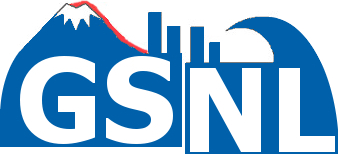The GSNL intitiative is a partnership composed of:
- the CEOS (Committee on Earth Observation Satellites) Space agencies,
- the in situ data providers, including monitoring institutes, agencies and consortia managing data infrastructures,
- the international scientific community.
The CEOS space agencies

The Committee on Earth Observation Satellites – CEOS, comprises a number of space agencies which support the GSNL initiative with satellite imagery (SAR and optical) free of charge.
Within the CEOS, the Data Coordination Team (DCT) is the main interface with GSNL. The GSNL Chair reports on Supersite results and on the status of the initiative at periodic meetings of the CEOS Working Group on Disasters.
The following space agencies support GSNL with large amounts of data:
- European Space Agency (ESA)
- German Aerospace Centre (Deutsches Zentrum für Luft- und Raumfahrt – DLR)
- Canadian Space Agency – Agence spatiale canadienne (CSA-ASC)
- National Aeronautics and Space Administration (NASA)
- Italian Space Agency (Agenzia Spaziale Italiana – ASI)
- French Space Agency (Centre National d’études Spatiales – CNES)
In situ data providers

The following institutes/agencies provide access to ground-based data over the Supersites.
- U.S. Geological Survey (USGS), USA
- Instituto Geofísico, Escuela Politécnica Nacional, Ecuador
- UNAVCO, USA
- Icelandic Met Office, Iceland
- University of Iceland
- Istituto Nazionale di Geofisica e Vulcanologia (INGV), Italy
- European Plate Observing System (EPOS), EU
- Research Unit Institute of Engineering Seismology and Earthquake Engineering of the Earthquake Planning and Protection Organisation (ITSAK), Greece
- Bogaziçi University – Kandilli Observatory and Earthquake Research Institute, Turkey
- GNS Science Te Pu Ao, New Zealand
The international scientific community
The global scientific community uses in situ and earth observation data to generate state of the art scientific results.
The scientific community produces research results which are normally published on scientific journals, but also delivered (in the form of reports or bulletins) to the Supersite end-users and DRR decision makers. These results and products are described under each Supersite page, in the periodic Biennial reports and in the occasional Result highlights.
See here a list of the scientists of the GSNL community.


